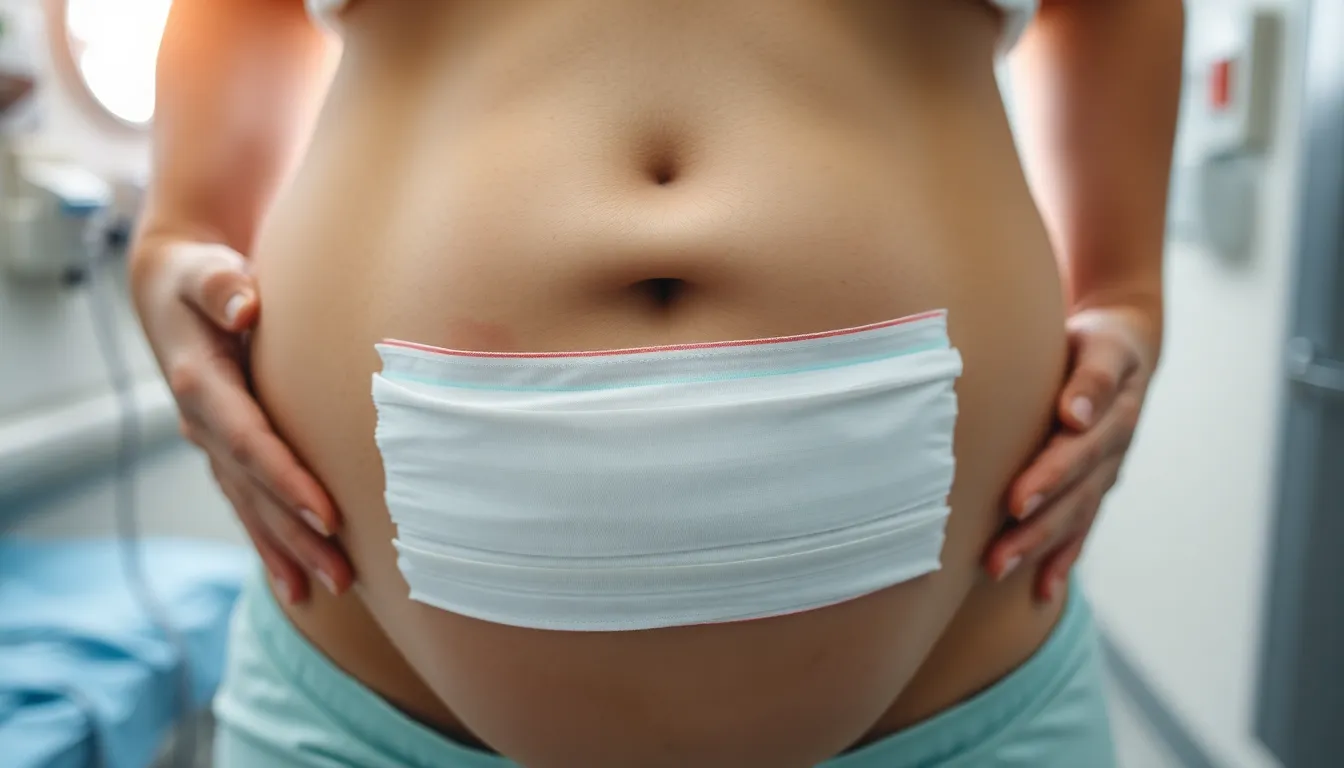Table of Contents
ToggleWhen it comes to C-sections, most people think of the miracle of childbirth. But what happens when the incision decides to take a little vacation? A slightly open C-section incision might sound like a plot twist in a medical drama, but it’s more common than you’d think.
Understanding C-Section Incisions
C-section incisions come in various types, and the most common include horizontal and vertical cuts. Horizontal incisions occur just above the pubic hairline, while vertical incisions run from the navel down to the pubic area. Typically, horizontal incisions heal easier and leave less visible scarring.
Slightly open incisions can occur for several reasons. Infection or improper healing may contribute to this issue. Factors like obesity or diabetes can also increase the risk of incision complications.
Monitoring for signs of infection is crucial. Symptoms such as redness, swelling, or discharge at the incision site require attention. In these cases, consulting a healthcare provider for assessment helps prevent further complications.
Proper care of the incision site promotes healing. Keeping the area clean and dry minimizes infection risk. Applying antibiotic ointment as directed by a healthcare professional can protect the incision.
Sometimes, surgical follow-up is essential if the incision remains open. Medical professionals may advise on further treatment options. These could include additional cleaning, stitching, or drainage of any fluid buildup.
Overall, awareness of these aspects helps in understanding c-section care. Incision management plays a vital role in recovery. Prioritizing health and seeking timely assistance can lead to better outcomes.
Common Causes of Open Incisions

Open incisions after a C-section can stem from various factors. It’s crucial to understand these causes to foster better recovery.
Infection Risk
Infections pose a significant threat to C-section incisions. Bacteria can enter the body through the incision, leading to complications. Symptoms like redness, swelling, and increased pain often indicate an infection. Those with obesity or diabetes face higher infection risks due to compromised immune responses. Proper wound care, such as keeping the area clean and dry, reduces this risk. Identifying early signs of infection allows for timely medical intervention, preventing further complications.
Poor Healing
Poor healing can occur for several reasons, including improper incision care and underlying health conditions. Factors such as smoking or nutritional deficiencies hinder the body’s natural healing process. Increased pressure from movements or weight can also contribute to delayed healing timelines. Monitoring the incision site closely helps detect inconsistencies, such as separation or unusual discharge. Consulting a healthcare provider assists in addressing any complications early, promoting effective recovery.
Signs and Symptoms to Watch For
Monitoring the incision site after a C-section is vital for ensuring proper healing. Several signs can indicate a slightly open incision requiring attention.
Visual Indicators
Redness around the incision can signal infection. Discharge, especially if it’s yellow or green, points to potential complications. Swelling may also develop, leading to an abnormal rise in skin temperature. A gap in the incision or the edges appearing separated suggests improper healing. Observing these visual indicators allows for early intervention and better outcomes.
Physical Discomfort
Tenderness at the incision site often indicates an underlying issue. Increased pain during movement or pressure can suggest infection or complications. Swelling in the surrounding area, particularly if it’s accompanied by warmth, raises concern for healing problems. Unusual sensitivity when lightly touching the area may also signify irritation. Paying attention to these discomfort signs can prompt timely medical evaluation and necessary treatment.
Treatment Options for Open Incisions
A slightly open C-section incision may require various treatment options to promote healing. Addressing any issues promptly minimizes complications and enhances recovery.
Medical Interventions
Healthcare providers may initiate treatment with antibiotics to combat infection. They assess the incision site to determine the extent of the opening. If necessary, sutures or staples may be reinserted to close the incision securely. Additionally, drainage may be required if fluid accumulation occurs. Regular follow-up appointments ensure that any developing issues receive prompt attention.
Home Care Strategies
At home, individuals can implement several care strategies to support healing. Keeping the incision clean and dry is essential in preventing infections. Regularly monitoring the site for signs of complications requires vigilance. Applying antibiotic ointment as instructed by a healthcare provider aids in minimizing infection risks. Wearing loose clothing helps avoid irritation around the incision. Engaging in gentle movements promotes circulation without straining the area.
Preventive Measures
Preventive measures play a crucial role in minimizing complications associated with a slightly open C-section incision. Following specific guidelines contributes significantly to a smoother recovery process.
Postoperative Care
Monitoring the incision site closely aids in early detection of complications. Keeping the area clean and dry promotes healing. Applying antibiotic ointment as prescribed enhances infection prevention. Wearing loose clothing prevents irritation on the surgical site. Regular follow-up appointments allow healthcare providers to assess recovery progress and address any emerging issues promptly. Observing for signs like increased redness or swelling immediately warrants medical consultation.
Lifestyle Adjustments
Adopting healthier lifestyle choices supports overall recovery. Balanced nutrition strengthens the body’s immune response, which aids healing. Staying hydrated ensures optimal skin elasticity and supports recovery. Engaging in gentle movement encourages circulation without straining the incision site. Reducing smoking and alcohol consumption significantly impacts healing efficiency, as both can hinder recovery. Managing weight through a proper diet and moderate exercise lowers the risk of complications related to obesity or diabetes.
Monitoring a slightly open C-section incision is essential for ensuring a smooth recovery. By recognizing early signs of infection and addressing them promptly, individuals can significantly reduce the risk of complications. Proper wound care and regular follow-up appointments play a vital role in promoting healing.
Adopting healthier lifestyle choices can further support recovery and minimize potential issues. Staying informed and proactive empowers individuals to take charge of their healing journey. Ultimately, with the right care and attention, a slightly open incision can lead to successful recovery and restored health.







